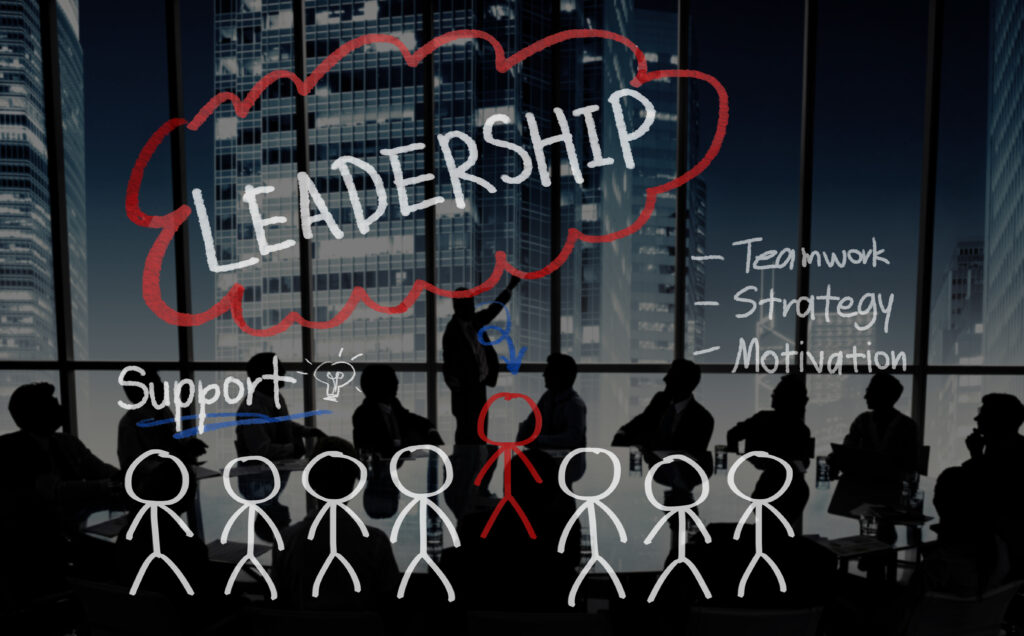
In the realm of leadership, a stark contrast exists between managers and true leaders. While managers focus on tasks and processes, authentic leaders inspire through their vision and charisma. The essence of leadership qualities lies in fostering trust, cultivating innovation, and embracing challenges head-on. Effective leaders not only delegate responsibilities but also lead by example, guiding their team towards success with unwavering determination.
Leadership is not merely about holding a title; it’s about embodying essential traits that drive teams to exceed expectations. Join us as we delve into the core characteristics that define exceptional leaders and learn how you can cultivate these qualities within yourself to stand out in any endeavor.
Essential Leadership Qualities
Strong Decision-Making Skills

Leadership qualities encompass a variety of skills, with essential leadership qualities being paramount. One crucial attribute is having strong decision-making abilities. Leaders must make tough choices promptly and effectively to steer their teams in the right direction. For instance, imagine a team leader faced with two equally qualified candidates for a promotion; their decision impacts not only the individuals involved but also the entire team’s morale and productivity.
Effective leaders possess excellent communication skills that allow them to convey their vision clearly and inspire others to follow suit. Communication is key in motivating teams towards common goals by providing guidance, feedback, and support. By fostering open dialogue within the team, leaders can create an environment where ideas flow freely, collaboration thrives, and conflicts are resolved constructively.
Adaptability Is Key
Adaptability is another critical quality that top leaders exhibit as they navigate through ever-changing circumstances. In today’s fast-paced world, businesses face constant challenges such as market fluctuations or technological advancements that require swift adjustments to stay competitive. A leader who can adapt quickly by embracing change rather than resisting it sets an example for their team members to do the same.
Developing Good Leadership Traits

Continuous Learning
Leadership traits are not innate but can be developed through continuous learning and self-improvement. Successful leaders understand the importance of constantly expanding their knowledge and skills to adapt to changing environments. By seeking out new information, staying updated on industry trends, and actively pursuing personal development opportunities, individuals can enhance their leadership qualities.
Continuous learning allows leaders to stay ahead of the curve, make informed decisions, and inspire confidence in their team members. For instance, a manager who regularly attends workshops or enrolls in online courses to improve their communication skills will likely excel at articulating ideas clearly and fostering strong relationships with colleagues.
- Pros:
- Enhances decision-making abilities
- Fosters innovation within teams
- Builds credibility among peers
- Cons:
- Requires time commitment
- May encounter resistance to change from team members
Building Emotional Intelligence
Another crucial aspect of developing good leadership traits is building emotional intelligence. Understanding emotions, both one’s own and those of others, enables leaders to connect with team members on a deeper level. Leaders with high emotional intelligence can navigate conflicts effectively, provide constructive feedback empathetically, and create a positive work environment where everyone feels valued.
By recognizing emotions in themselves and others, great leaders can tailor their communication styles accordingly. For example, a leader who notices that a team member seems stressed before an important presentation may offer support or adjust deadlines to alleviate pressure.
Importance of Leadership in Business
Setting Vision and Direction
Leadership is crucial in guiding a business by defining its goals and strategies. A strong leader sets clear objectives for the company, inspiring employees to work towards achieving them. For example, Steve Jobs’ visionary leadership role at Apple led to the creation of innovative products like the iPhone.
Effective leadership creates a roadmap for success, ensuring that everyone in the organization understands their roles and responsibilities. By establishing a clear direction, leadership positions help align individual efforts with overall business objectives. This clarity reduces confusion among employees and enhances organizational performance.
- Provides clear direction
- Aligns individual efforts
- Reduces confusion
Fostering Positive Work Culture

Good leadership qualities contribute to creating a positive work environment where employees feel valued and motivated. When leaders prioritize communication, collaboration, and respect within the workplace, it boosts morale and job satisfaction among staff members. For instance, Google’s emphasis on employee well-being under Sundar Pichai’s leadership position has resulted in high levels of employee engagement.
- Boosts morale
- Enhances job satisfaction
Strong leadership promotes teamwork and cooperation among employees by fostering an inclusive culture that values diverse perspectives. By encouraging open communication channels, effective leaders empower their teams to share ideas freely without fear of judgment or reprisal. This collaborative environment cultivates creativity and innovation within the organization.
- Promotes teamwork
- Fosters inclusivity
- Encourages open communication
Driving Innovation and Adaptation
Innovative solutions often stem from visionary leadership that encourages creativity and experimentation within an organization. A leader who champions a culture of continuous learning inspires employees to think outside the box when faced with challenges or opportunities for growth.
- Inspires creativity
- Encourages experimentation
Adapting to market changes requires agile leadership capable of making quick decisions based on evolving circumstances while keeping long-term goals in mind. Strong leaders navigate uncertainties confidently by leveraging their experience while remaining adaptable enough to pivot strategies when necessary.
- Makes quick decisions
- Remains adaptable
Effective Communication Skills for Leaders
Active Listening
Active listening is key for leadership qualities. It involves focusing on what others are saying without interrupting. This skill allows leaders to truly understand their team members’ needs, concerns, and perspectives. By actively listening, leaders show respect and build trust within the team.
Active listening enables effective leaders to provide better guidance and support. When team members feel heard and understood, they are more motivated to contribute positively to the team’s goals. For example, a leader who practices active listening may notice when a team member is struggling with a task and offer assistance promptly.
- Active listening fosters understanding
- Builds trust within the team
Clear & Concise Communication

Clear and concise communication is crucial for effective leadership as it minimizes misunderstandings among team members. When leaders articulate their ideas in a straightforward manner, it helps avoid confusion or misinterpretation of instructions. Good communication promotes transparency within the team.
Leaders who communicate clearly inspire confidence in their abilities among team members. Clarity in communication ensures that everyone is on the same page regarding tasks, deadlines, and expectations set by the leader.
- Prevents misunderstandings
- Promotes transparency within the team
Non-verbal Communication
Non-verbal cues play a significant role in how leadership skills are perceived by others. Body language can convey confidence, authority, or approachability depending on how it’s used by leaders during interactions with their teams. Maintaining eye contact shows engagement and attentiveness.
Effective leaders pay attention to their non-verbal cues to ensure alignment with their verbal messages. Being aware of body language helps them project credibility and establish rapport with their teams effortlessly.
Decision-Making in Leadership
Gathering Information
Leaders, to make informed decisions, must gather and assess information objectively. By collecting relevant data, they can ensure their choices are based on facts rather than assumptions. For instance, when faced with a challenging situation, a leader might analyze market trends or customer feedback to make strategic decisions.
Leaders who excel in decision-making understand the importance of considering various perspectives. By seeking input from team members or experts in different areas, they broaden their understanding of the issue at hand. This collaborative approach not only enhances the quality of solutions but also fosters a sense of inclusivity within the team.
Timely Decisions
The ability to make quick yet thoughtful decisions is crucial for effective leadership, especially during high-pressure scenarios. Leaders who can remain calm under stress and act promptly demonstrate strong leadership qualities. For example, when facing tight deadlines or unexpected challenges, a leader who can swiftly assess the situation and take decisive action inspires confidence in their team.
Influence and Empathy in Leadership
Building Influence
Influential leaders have the ability to inspire their team members through their actions, words, and values. By setting a positive example, they motivate others to perform at their best. When leaders consistently demonstrate integrity and dedication, team members are more likely to respect and follow them. For instance, a manager who actively supports professional growth within the team is likely to earn admiration from colleagues.
Leaders can also build influence by fostering open communication channels with their team. Encouraging feedback and listening to suggestions show that leaders value the input of others. This inclusive approach not only makes team members feel heard but also increases their engagement and commitment to achieving shared goals. Recognizing individual contributions publicly can boost morale and reinforce positive behavior within the team.
- Pros:
- Inspires motivation
- Fosters respect among team members
- Encourages collaboration
- Cons:
- Overreliance on influence may lead to manipulation tactics
Cultivating Empathy
Empathy plays a crucial role in effective leadership by enabling leaders to understand the emotions and experiences of those they lead. Leaders who demonstrate empathy create a supportive environment where team members feel valued and understood. By showing genuine concern for the well-being of others, leaders foster trust within the team dynamic.
One way for leaders to cultivate empathy is by actively listening to their team members without judgment or interruption. Acknowledging both verbal and non-verbal cues allows leaders to gain deeper insights into how individuals are feeling or what challenges they may be facing. Moreover, expressing gratitude for efforts made by the team demonstrates appreciation for their hard work while strengthening bonds based on mutual respect.
Encouraging Innovation and Risk-Taking
Fostering Creativity
Leadership qualities involve fostering creativity by creating an environment that encourages innovation. When leaders promote a culture of experimentation, employees feel empowered to explore new ideas without fear of failure. This approach cultivates a growth mindset, where challenges are viewed as opportunities for learning and development. By supporting employees in their creative endeavors, leaders pave the way for groundbreaking solutions to emerge.
Encouraging innovation can lead to significant benefits for businesses. Taking calculated risks is essential as it opens up avenues for growth and development. For instance, when leaders support employees in pursuing innovative projects, they create space for new ideas to flourish. This not only enhances the company’s agility but also positions it ahead of competitors by embracing change proactively.
Recognizing and Rewarding Efforts
Recognizing and rewarding innovative efforts play a crucial role in motivating employees to think outside the box. When leaders acknowledge the value of creative ideas and actions, they reinforce a culture that values transparency and improvement. By celebrating successes stemming from innovative projects, leaders inspire others to take similar bold steps towards progress.
- Pros:
- Sparks creativity among team members.
- Cultivates a positive attitude towards challenges.
- Drives continuous improvement within the organization.
- Cons:
- Overemphasis on risk-taking may lead to reckless decision-making.
- Not all innovative ideas may yield successful outcomes immediately.
Building Relationships as a Leader
Fostering Loyalty and Engagement
Building strong relationships with team members is crucial for leaders. It fosters loyalty, engagement, and creates a positive work environment. When team members feel valued and respected, they are more likely to be motivated and committed to their work. For instance, by recognizing individual contributions or providing constructive feedback, leaders can strengthen the bond with their team.
Effective communication plays a vital role in relationship-building among leaders and team members. Open lines of communication allow for transparency, clarity, and understanding within the team dynamic. By actively listening to their teams’ concerns or ideas without judgment, leaders can establish trust and create an inclusive environment where everyone feels heard and appreciated.
Prioritizing Trust in Leadership

Trust serves as the foundation of effective leadership. Leaders should prioritize building trust with their teams through consistency, integrity, and reliability in their actions. When employees trust their leaders, they are more likely to be open to feedback, follow guidance willingly, and collaborate effectively with colleagues. Trust also encourages creativity and risk-taking within the team.
Leaders who demonstrate honesty in their interactions build credibility among team members, fostering an environment where individuals feel safe to express themselves authentically without fear of repercussion or judgment. By being transparent about decisions or challenges faced by the organization, leaders cultivate a culture of trust that promotes teamwork and mutual support.
Leveraging Effective Networking
In addition to cultivating relationships within their teams,leaders should also focus on effective networking outside the organization’s boundaries.Networking enables them to connect with other professionals from diverse backgrounds,gain valuable insights,and expand influence across industries.By attending conferences,speaking at events,and participating in industry associations,leaders can broaden their network,receive mentorship,and stay updated on industry trends.These connections not only offer learning opportunities but also provide access to resources that can benefit both personal growthand organizational success.
Adapting to Change as a Leader
Embracing Change
Leaders must be adaptable and embrace change to navigate through evolving business landscapes. Being open-minded and flexible enables leaders to identify new opportunities and adjust strategies accordingly. In times of uncertainty, the ability to adapt quickly can make a significant difference in how well a team or organization weathers challenges.
Being resistant to change can hinder progress, while embracing it allows for growth and innovation. For instance, when faced with implementing new technologies or processes, an adaptable leader will assess the situation objectively, gather input from their team members, and pivot strategies accordingly. This approach fosters a culture of continuous improvement within the organization.
Providing Support
Providing support and guidance during times of change helps alleviate resistance among team members. A good leader acts as an anchor during turbulent times by offering reassurance, clarity on expectations, and direction on how individuals can contribute effectively amidst changes happening around them. By being an active listener who understands individual concerns and addresses them empathetically, a leader builds trust within their team.
An example could be seen in difficult situations like restructuring or downsizing where employees may feel uncertain about their future roles. An effective leader would communicate openly about the reasons behind such decisions while also providing avenues for feedback and support throughout the transition period.
Closing Thoughts
You’ve now got a solid grasp of what it takes to be a great leader. From essential qualities to fostering innovation and adapting to change, leadership is about more than just giving orders. It’s about inspiring, communicating effectively, making tough decisions, and building strong relationships. Remember, being a leader isn’t about being perfect; it’s about continually growing and learning from your experiences.
Now that you’re armed with this knowledge, go out there and put it into action. Whether you’re leading a team at work or taking charge in your community, embody these leadership traits. Embrace challenges, empower others, and lead with empathy. The world needs strong, compassionate leaders like you to make a difference. Go show them what you’re made of!
Featured Image courtesy of Freepik
